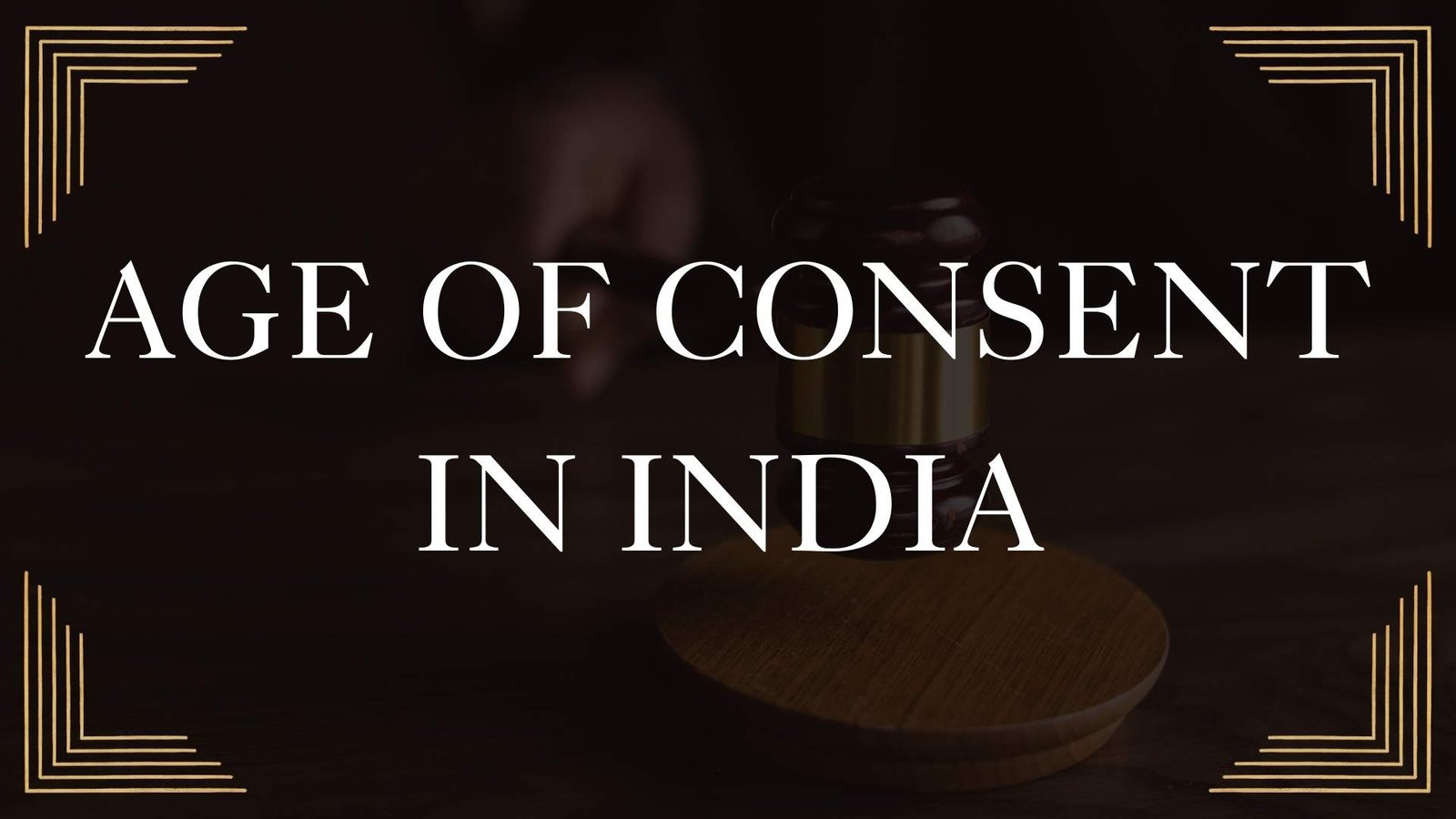On this page you will read detailed information about Legal Age of Consent in India.
As you navigate the complex landscape of legal and social norms in India, understanding the age of consent is crucial. This critical threshold determines when an individual is legally capable of agreeing to sexual activity. In India, the age of consent carries significant legal, cultural, and social implications. Whether you’re a parent, educator, or concerned citizen, grasping the nuances of this law is essential. This article will explore the current age of consent in India, its historical context, and the ongoing debates surrounding this sensitive topic. By delving into this subject, you’ll gain valuable insights into an issue that impacts millions of young Indians.
What is the Age of Consent in India?
Current Legal Framework
In India, 18 is presently the legal age of consent for all people, regardless of gender. This was introduced by the Protection of Children from Sexual Offenses (POCSO) Act of 2012, which raised the age from 16 to 18. Under this law, any sexual activity involving a person under 18 is considered statutory rape, even if consensual. The Criminal Law (Amendment) Act of 2013 further reinforced this age limit, making it applicable to all sexual relationships.
Historical Context
The age of consent in India has a complex history, with several changes over time. In 1860, it was set at just 10 years old. Over the decades, it gradually increased:
- 1891: Raised to 12 years
- 1925: Increased to 14 years
- 1940: Set at 16 years
Prior to the POCSO Act of 2012, which increased it to 18 years, this was the threshold.
Ongoing Debates and Considerations
Legal professionals and social activists are debating the present age of consent. Some argue that it criminalizes consensual relationships among adolescents and may deter them from seeking essential healthcare services due to mandatory reporting requirements. The Law Commission of India has recently recommended that in cases where the age difference between parties is not more than three years, courts should have discretion to consider genuine consent and potentially reduce sentences. However, critics argue that this doesn’t go far enough in addressing the complexities surrounding adolescent sexuality and autonomy.
The Background of India’s Age of Consent Laws
Early Colonial Era
In India, the age of consent has a complicated past that dates back to the time of British colonization. The age of consent for women in India was set at a startlingly low 10 years old in 1860, when the Indian Penal Code was originally being drafted. This reflected the prevalent social norms of the time, particularly the practice of child marriage among certain communities.
The Watershed Moment of 1891
A pivotal change came in 1891 with the introduction of the Age of Consent Act. This law increased the consent age from 10 to 12 years old for all girls, married or single. The act was largely a response to public outcry following the tragic death of Phulmoni Dasi, a 10-year-old girl who succumbed to injuries from forced intercourse by her 35-year-old husband.
Gradual Progression and Societal Tensions
Over the following decades, the age of consent in India continued to rise gradually. It was increased to 14 years in 1925 and further to 16 years in 1940. However, these changes were not without controversy. The reforms often faced opposition from orthodox Hindu leaders and nationalists who viewed them as interference in traditional customs.
Modern Era and Current Status
The most recent significant change came with the Protection of Children from Sexual Offences (POCSO) Act in 2012, which set the age of consent at 18 years for both genders. This shift has brought its own set of challenges, including the criminalization of consensual relationships between adolescents and potential barriers to accessing sexual health services. As society continues to evolve, the debate around the appropriate age of consent in India remains ongoing.
India’s Consent Law in the Present Era
Legal Framework
The age of consent in India is currently set at 18 years old, regardless of gender or sexual orientation. By raising the age of consent from 16 to 18, the Criminal statute (Amendment) Act of 2013 created this statute. The Protection of Children from Sexual Offences (POCSO) Act of 2012 further reinforces this by considering any sexual activity with individuals under 18 as an aggravated offense.
Historical Context
The age of consent in India has evolved significantly over time. In 1860, it was set at just 10 years for females. This age limit was gradually increased:
- 1891: Raised to 12 years
- 1925: Increased to 14 years
- 1940: Set at 16 years
It’s crucial to remember that in India, there was no set age of consent for men before 2012.
Current Debates and Recommendations
The current age of consent law has sparked debates due to its implications on consensual relationships between young adults. The Law Commission of India (LCI) has recently recommended that in cases where the age difference between the parties is not more than three years, special courts should have the discretion to award a lower sentence if genuine consent is established.
This recommendation aims to address the complexities surrounding the age of consent in India, particularly in cases involving young couples in consensual relationships. The LCI has proposed guidelines for courts to determine whether the consent was manipulated, coerced, or induced through undue influence.
As discussions continue, it’s clear that balancing child protection with the realities of adolescent relationships remains a challenge in India’s legal landscape.
India’s Age of Consent Exclusions
The Protection of Children from Sexual Offences (POCSO) Act of 2012 determined that the average age of consent in India is eighteen years old. However, there are some notable exceptions to this rule that complicate the legal landscape.
Marital Exception
One significant exception relates to marital relationships. Indian law states that if a woman is 13 years of age or older, a man’s sexual relations with her are not regarded as rape. This provision has been a subject of controversy and legal challenges.
In 2017, the Supreme Court of India made a landmark ruling that sexual intercourse by a man with his wife under 15 years of age would amount to rape. This decision partially addressed the issue of child marriage and marital rape, but it still leaves a gap between the general age of consent and the marital exception.
Religious and Cultural Considerations
The application of the age of consent in India is further complicated by religious and cultural practices. The Punjab and Haryana High Court, for example, decided that a Muslim female who is older than 15 years old is free to choose her own spouse. This decision highlights the tension between codified law and customary practices in India’s diverse society.
Consensual Relationships Among Adolescents
The strict application of the age of consent laws has led to unintended consequences, particularly in cases involving consensual relationships between adolescents. Studies have shown that a significant proportion of sexual assault cases involving adolescent girls are actually consensual relationships. This has raised concerns about the criminalization of teenage sexuality and the need for a more nuanced approach to the age of consent in India.
As debates continue, it’s clear that the exceptions to the age of consent in India reflect the complex interplay of legal, cultural, and social factors in the country’s evolving legal landscape.
Understanding Consent and Statutory Rape in India
Defining Consent in Indian Law
In India, the concept of consent is crucial when discussing rape laws. The Indian Penal Code defines consent as a woman’s express, voluntary agreement to engage in sexual activity. It’s important to note that consent obtained through coercion, deceit, or when the woman is unable to give consent (e.g., if she is unconscious or mentally ill) is considered invalid.
The Age of Consent and Statutory Rape
In India, the legal age of consent is eighteen. This means that any sexual activity with a person under 18 is considered statutory rape, regardless of whether the minor consented or not. The consent age was raised from 16 to 18 by the Protection of Children from Sexual Offenses (POCSO) Act of 2012, which established this statute.
Challenges and Criticisms
While the intention behind the current age of consent laws is to protect minors from exploitation, it has created several challenges. These include:
- Criminalizing consensual sexual activity between adolescents
- Strengthening family control over adolescents’ sexuality and relationships
- Restricting the availability of sexual and reproductive health treatments for teenagers
Some courts have recognized these issues and suggested lowering the age of consent to 16 years, along with implementing “close-in-age” exceptions to prevent older individuals from taking advantage of younger adolescents.
Moving Towards Affirmative Consent
To address some of the issues in interpreting consent, there’s a growing argument for implementing an affirmative consent model in India. This would require the accused to take active steps to seek the complainant’s consent, rather than relying on the absence of a “no.” However, experts note that changing the law alone may not be sufficient without addressing societal attitudes and providing comprehensive sexual education.
Consequences for Violating the Age of Consent in India
Violating the age of consent in India can lead to severe legal repercussions. In India, the Protection of Children from Sexual Offences (POCSO) Act of 2012 establishes the legal age of consent at eighteen, meaning that having sex with someone younger than this is illegal.
Legal Ramifications
Engaging in sexual activities with a minor, even if consensual, can result in charges of statutory rape. Offenders may face imprisonment and hefty fines. The law is designed to protect minors from exploitation, but it has also led to unintended consequences. For instance, many cases involve consensual relationships between adolescents, where parents file charges against their daughters’ partners.
Impact on Healthcare Access
The strict enforcement of the age of consent in India has had a significant impact on adolescent healthcare. Mandatory reporting requirements have made healthcare providers reluctant to offer sexual and reproductive health services to minors. This has resulted in a drastic reduction in adolescents seeking contraception, STI treatment, and safe abortion services, potentially leading to increased health risks.
Social and Psychological Consequences
Beyond legal implications, violating the age of consent can have profound social and psychological effects. Stigma associated with underage sexual activity can lead to ostracism and mental health issues for both the minor and the accused. Additionally, the criminalization of consensual relationships between peers has raised concerns about the law’s impact on adolescent development and autonomy.
Calls for Reform
Given these challenges, there have been calls to reconsider the age of consent in India. Some advocate for lowering it to 16 years, arguing that this would better align with adolescent realities while still protecting minors from exploitation. However, any changes would require careful consideration of various factors, including cultural norms, healthcare access, and the broader legal framework surrounding marriage
Conclusion
As you navigate the complex landscape of consent laws in India, it’s crucial to remain informed and vigilant. The age of consent serves as a critical safeguard for minors, protecting them from exploitation and abuse. While the current legal framework sets a clear standard, ongoing societal debates highlight the need for continued discussion and potential reform. As responsible citizens, it’s your duty to understand these laws, advocate for the protection of minors, and promote healthy relationships based on mutual respect and consent. By staying educated on this topic, you contribute to a safer society for all, especially the most vulnerable members of your community.
Disclaimer
The information and services on this website are not intended to and shall not be used as legal advice. You should consult a Legal Professional for any legal or solicited advice. While we have good faith and our own independent research to every information listed on the website and do our best to ensure that the data provided is accurate. However, we do not guarantee the information provided is accurate and make no representation or warranty of any kind, express or implied, regarding the accuracy, adequacy, validity, reliability, availability, or completeness of any information on the Site. UNDER NO CIRCUMSTANCES SHALL WE HAVE ANY LIABILITY TO YOU FOR ANY LOSS OR DAMAGE OF ANY KIND INCURRED AS A RESULT OR RELIANCE ON ANY INFORMATION PROVIDED ON THE SITE. YOUR USE OF THE SITE AND YOUR RELIANCE ON ANY INFORMATION ON THE SITE IS SOLELY AT YOUR OWN RISK. Comments on this website are the sole responsibility of their writers so the accuracy, completeness, veracity, honesty, factuality and politeness of comments are not guaranteed.
So friends, today we talked about Legal Age of Consent in India, hope you liked our post.
If you liked the information about Legal Age of Consent in India, then definitely share this article with your friends.
Knowing about laws can make you feel super smart ! If you find value in the content you may consider joining our not for profit Legal Community ! You can ask unlimited questions on WhatsApp and get answers. You can DM or send your name & number to 8208309918 on WhatsApp









